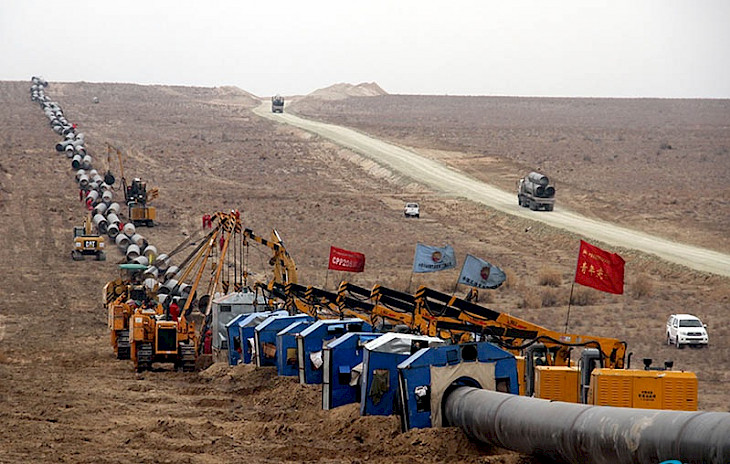Turkmenistan, possessing the world's 11th largest natural gas reserves, is one of the key players in the global energy market.
However, this wealth has become both a source of prosperity and a challenge for the country. The development of the gas industry faces a complex mix of economic, geopolitical, and infrastructure obstacles, according to an article on Eurasiatoday.ru.
Turkmenistan's Energy Strategy and Potential
The country's energy strategy, initiated under its first president Saparmurat Niyazov, is based on diversifying export routes. But can Turkmenistan fully realize its potential on the global stage?
Current Infrastructure and Major Routes
The foundation of natural gas exports lies in major pipelines:
-
Turkmenistan–China Pipeline: A transnational route stretching over 9,000 km, featuring three active lines (A, B, C) with a combined capacity of 55 billion cubic meters (bcm) of gas annually.
The planned fourth line (D) is expected to increase supplies to 65 bcm, fueling China's industrial base.
-
Westward Pipelines: The "Korpeje–Kurt-Kui" pipeline connects Turkmenistan to Iran, while the proposed Trans-Caspian Pipeline aims to reach European markets.
Gas exports to China have become a priority thanks to an agreement between Gurbanguly Berdimuhamedov and Xi Jinping. However, Turkmenistan also seeks to diversify its exports by promoting deliveries to Europe via the Caspian Sea.
The Trans-Caspian Project: Opportunity or Utopia?
The Trans-Caspian Pipeline, conceptualized in the early 2000s, has repeatedly faced economic and political hurdles. Even agreements on the Caspian Sea's status (2018) have not accelerated its implementation.
Key Challenges:
- Financing: Construction is estimated at $12–15 billion. Amid financial difficulties in the EU and a lack of investors, the project risks stagnating.
- Environmental Standards: Adhering to ecological requirements creates additional risks and prolongs the timeline.
- Geopolitics: Heightened conflicts of interest among Russia, China, and the West cast doubt on the project's stability.
An alternative—a 78 km pipeline to Azerbaijan proposed by British expert John Roberts—appears more feasible.
Geopolitical Risks
Turkmenistan's gas reserves lie at the intersection of global power struggles:
- West vs. China and Russia: The U.S. aims to limit China's influence in Central Asia, with Turkmenistan, Uzbekistan, Kazakhstan, and Kyrgyzstan becoming focal points of this pressure.
- Security Threats: Issues in Afghanistan and the potential escalation of border conflicts threaten the stability of Turkmenistan's gas exports.
- Regional Tensions: Conflicts involving Iran, Turkey, and Israel add another layer of instability.
Conclusion
Turkmenistan's gas sector holds immense potential, but its realization demands overcoming significant challenges. While China remains its primary partner, efforts to diversify export routes require substantial investments and political determination.
The country's future hinges on its ability to integrate into the global energy network while maintaining neutrality. In the face of growing competition for Central Asia's resources, energy remains the key to sustainable regional development.
CentralasianLIGHT.org
December 27, 2024

